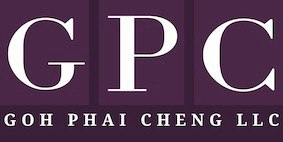14 August 2013, Singapore. Novel legal issues have been raised in Energenics Pte Ltd v Musse Singapore Pte Ltd and another suit [2013] SGHCR 21.
This case relates to a pending Singapore Patent Application “An apparatus and method for size reduction” (the Patent Application) visà-vis the invention (“the Invention”), filed by a Singaporean company—Musse Singapore, having its activities recorded at the Accounting and Corporate Regulatory Authority (“ACRA”) as patents and trademarks. By way of an Assignment, the Singapore Patent Application’s ownership passes to Musse Incorporated, a Malaysian holding company of Musse Singapore. Claiming priority from the Singapore Patent Application, Musse Incorporated filed a subsequent international patent application PCT/SG2010/000403.
Musse Singapore’s inventor/director H was formerly the CEO of Energenics. One M, formerly under the employ of Energenics, left to work for MNT Consultants (UK) Limited. Interestingly, M applied to the Registry of Patents at the Intellectual Property Office of Singapore (“IPOS”) to include himself as one of the inventors to be named in the Patent Application, to which Musse opposed. Curiously, M later withdrew his inventorship application. Nonetheless, Energenics asserted that M withdrew, not because he was not an inventor of the Invention, but because he did not wish to be directly embroiled in any acrimonious legal tussle over the Invention. At the trial, neither Energenics nor M have applied (or are applying) to be named as the proprietor or inventor of the Invention in any applications filed with the Registry of Patents in respect of the Invention.
Energenics sued the two Musse companies (“Musse”) to assert its rights and interest in the Invention claiming, inter alia, that:
(a) Energenic’s then-employee, H, had contributed to the inventive concept of the Invention in the course of his duties while he was under Energenics’s employ and that, as such, Energenics has ownership rights in the Invention and the Patent Application;
(b) M who had also contributed to the inventive concept of the Invention had, together with his employer MNT Consultants (UK) Limited, assigned all the rights and interest in the Invention to Energenics by way of an Assignment (“M’s Claims”).
Musse, in its defence, denied Energenics’s rights, contended that neither H not M were inventors of the Invention, that Energenics had no locus standi to make any claims related to M’s inventorship, and that sidestepping the Registry of Patents at IPOS, and going directly to the High Court for a determination of M’s inventorship, was an abuse of process.
Decision:
1. Energenics had locus standi under sections 19(2) and/or 20(1)(a) of the Patents Act to seek a determination of M’s Claims.
2. Questions about entitlement to patents under section 20(1)(a) should be heard at first instance by the Registrar of Patents at IPOS and not at the High Court. Energenics’ action amounted to circumvention of the legislative framework, especially in the absence of strong and cogent reasons to justify the same and was, therefore, an abuse of process.
Observation:
If one takes his ex-employer’s proprietary information, intellectual property, trade secrets or solicits ex-employer’s customers, usurp ex-employer’s business opportunity, wrongfully divert ex-employer’s operations to his own business, it is not uncommon for the latter to apply for injunctive and other equitable relief, apart from claiming damages from his ex-employee and the ex-employee’s new employer for, inter alia, intellectual property infringement, breach of confidential information, breach of post-employment non-compete clauses (also sometimes known as restraint of trade clauses) in his employment contract, breach of fiduciary duties, and/or tort of conspiracy to injure, as seen in the recent cases of Smile Inc Dental Surgeons, PH Hydraulics, Centre for Creative Leadership, and Swiss Butchery .
In this case, it is speculated that Energenics may have considered but could not claim for a breach of non-compete clause because Musse Singapore’s business, as recorded in the ACRA, is not in the same energy industry as Energenics and, therefore, not in competition. It is also interesting to note that this case probably shows that an invention, and the accompanying patent applied for that invention, is of greater value than recovering monetary loss, which can be difficult to quantify.
Application:
1. Inventors
Inventorship is a personal right, unique to the inventor, and which cannot be assigned the way ownership (and other interests) can. Under Singapore Patents Law, an inventor has a “moral right” to be named in any patent granted for his Invention, even if he is not the proprietor of the patent.
2. Employer owner v Employee inventor
A distinction is made between an employer owner and an employee inventor of a patent, although in some cases the employee inventor is the owner of the patent. Under Singapore Patents Law, under specific circumstances and conditions, an employer owns an employee invention. Apart from these specific circumstances, the employee inventor owns the patent. Accordingly, to know who the owner of an employee invention is, it would be useful to refer to the terms of the employment contract, either express or implied.
3. Technology SMEs
If you are thinking of taking a shortcut to owning a patent by employing another company’s inventor to file a patent, beware of the risks that may arise from your inventor’s ex-employer asserting its rights to your invention, for which you have applied a patent.
Disclaimer: The opinions expressed in this article are the sole responsibility of the author and do not necessarily reflect any position or policy of Goh Phai Cheng LLC (‘the firm’). While every effort has been made to ensure that the information contained in this article is correct, neither the author nor the firm can accept any responsibility for any errors or omissions or for any consequences resulting therefrom. Nothing in this article is intended to amount to legal advice and professional opinion should be sought on a case by case basis.
